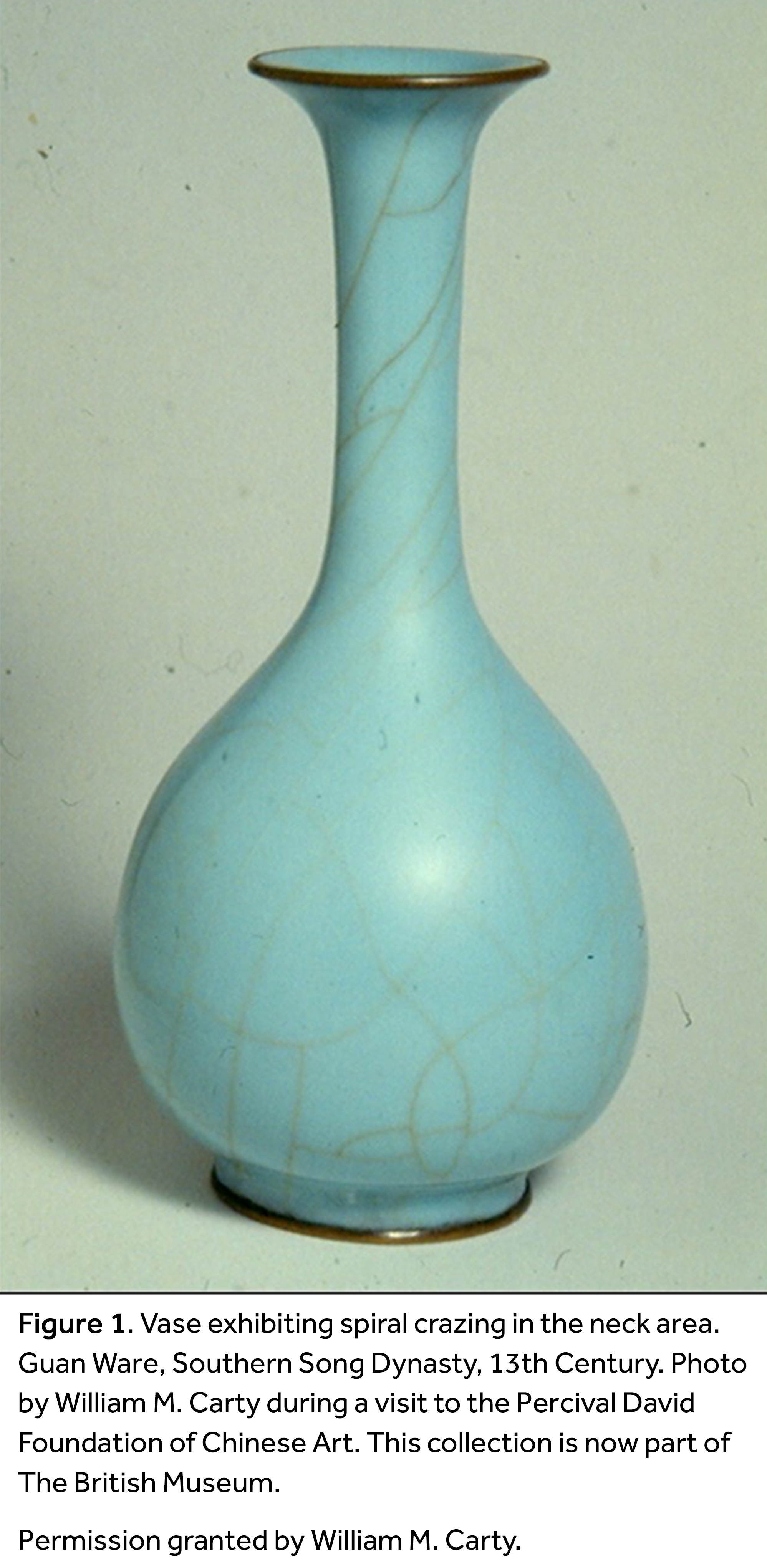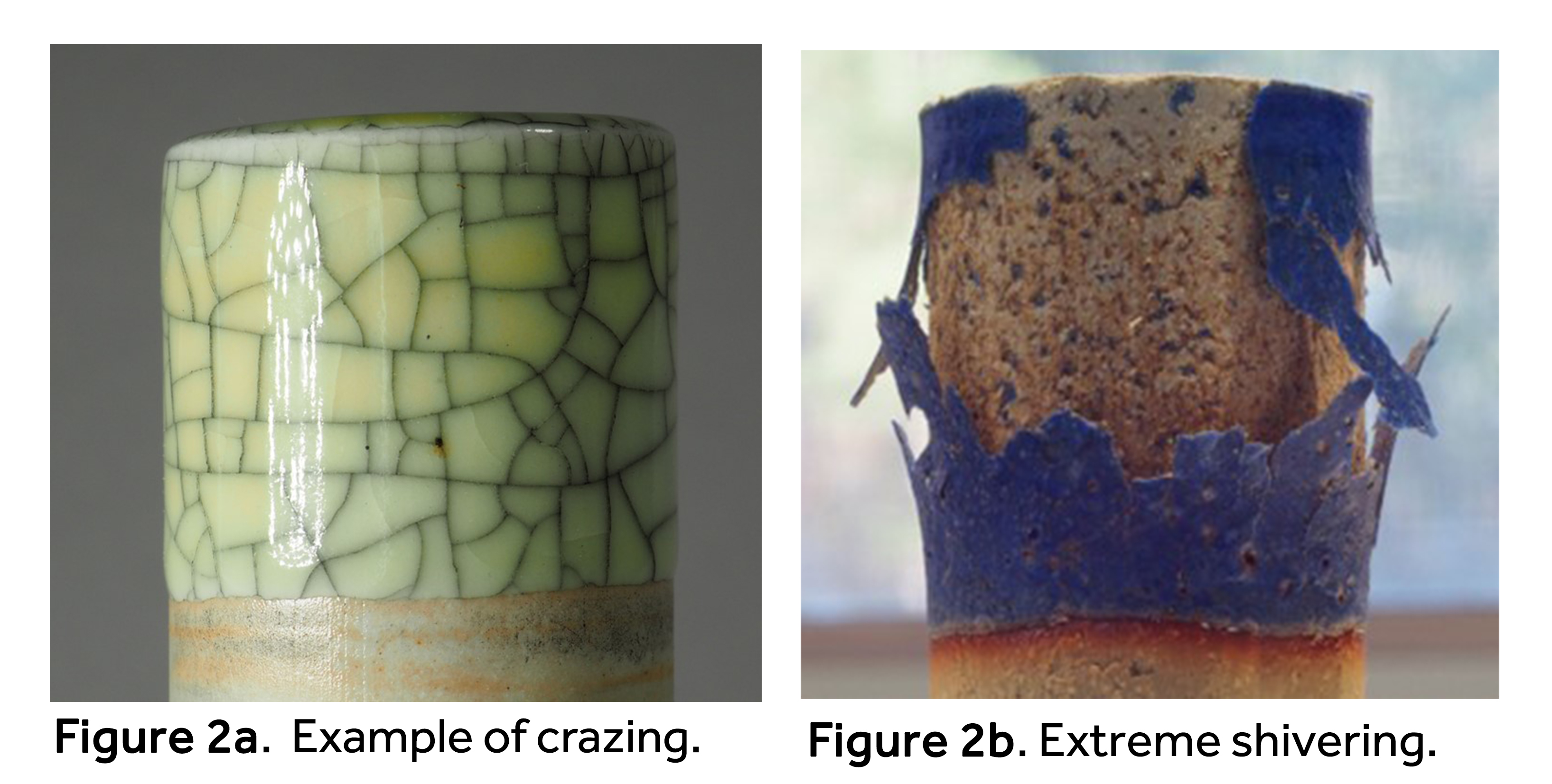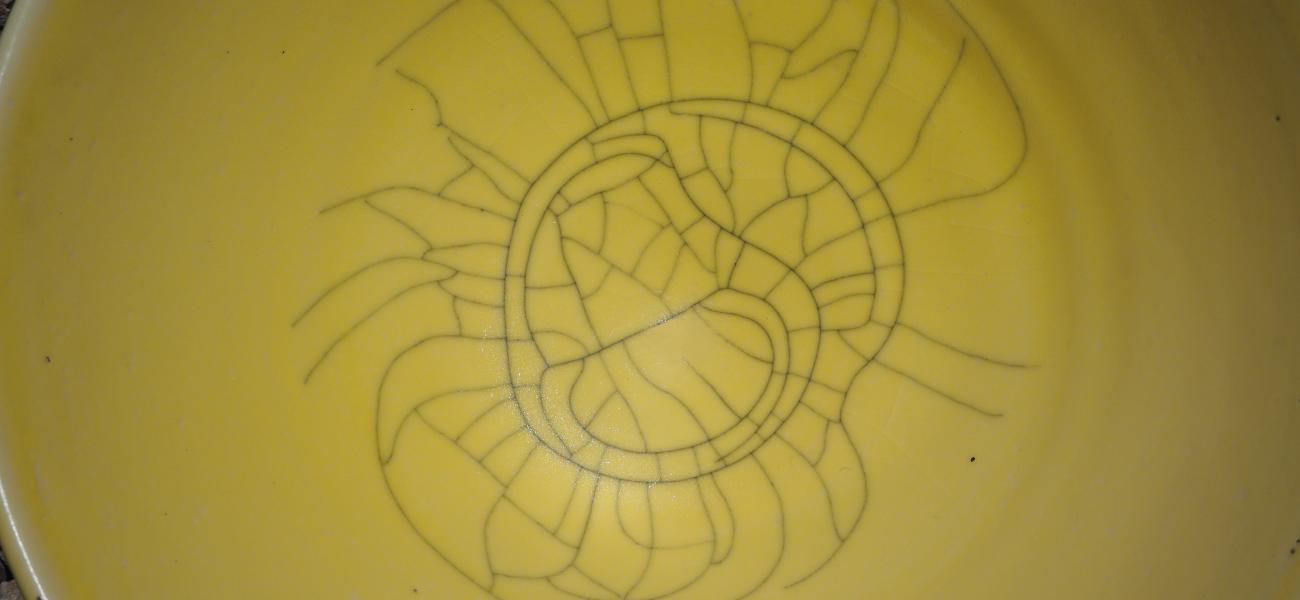 There’s something mystical about a piece of ancient pottery covered in a light glaze with contrasting cracks. I find that a widely spaced crazing pattern with meandering lines conveys a sense of calm and strength – a balance between the shattered look of too many cracks and the broken look of too few. Although every piece has its own unique pattern, the crack networks from piece to piece appear to have regular features, a phenomenon that is evident in a range of materials including: mud cracks in dry lake beds, cracks across the surfaces of planets, oil paintings, and craquelure in ceramic glazes.[1, 2]
There’s something mystical about a piece of ancient pottery covered in a light glaze with contrasting cracks. I find that a widely spaced crazing pattern with meandering lines conveys a sense of calm and strength – a balance between the shattered look of too many cracks and the broken look of too few. Although every piece has its own unique pattern, the crack networks from piece to piece appear to have regular features, a phenomenon that is evident in a range of materials including: mud cracks in dry lake beds, cracks across the surfaces of planets, oil paintings, and craquelure in ceramic glazes.[1, 2]
This essay is about my journey to uncover factors that influence crazing patterns and attempts to provide a plausible explanation for the “puzzling” pattern in the Chinese Guan ware vase. Along the way, I ran across an interesting method to create new, unusual crazing patterns. My hope is that fellow potters and ceramic artists can use these findings to guide their future explorations with crazing glazes.
As background or reminder for those who are not regularly immersed in minutiae of glaze chemistry, several physical changes occur to a piece of pottery during firing. As the kiln heats up, the clay body and glaze(s) undergo shrinkage. Water and porosity are removed and chemical reactions, such as whiting converting to calcium oxide and carbon dioxide gas, occur. At peak temperature the clay body is dense and stiff while the glaze is in a molten state. Upon cooling, the glaze transforms from molten liquid into a solid in contact with the clay body. As the cooling process continues, stresses1 begin to build due to the solid clay body and solid glaze layer contracting at different rates. When these two rates of contraction are close in value, the glaze is described as having a “good fit” to the clay body. When the fit is poor, crazing (figure 2a) or shivering (figure 2b) can occur.



